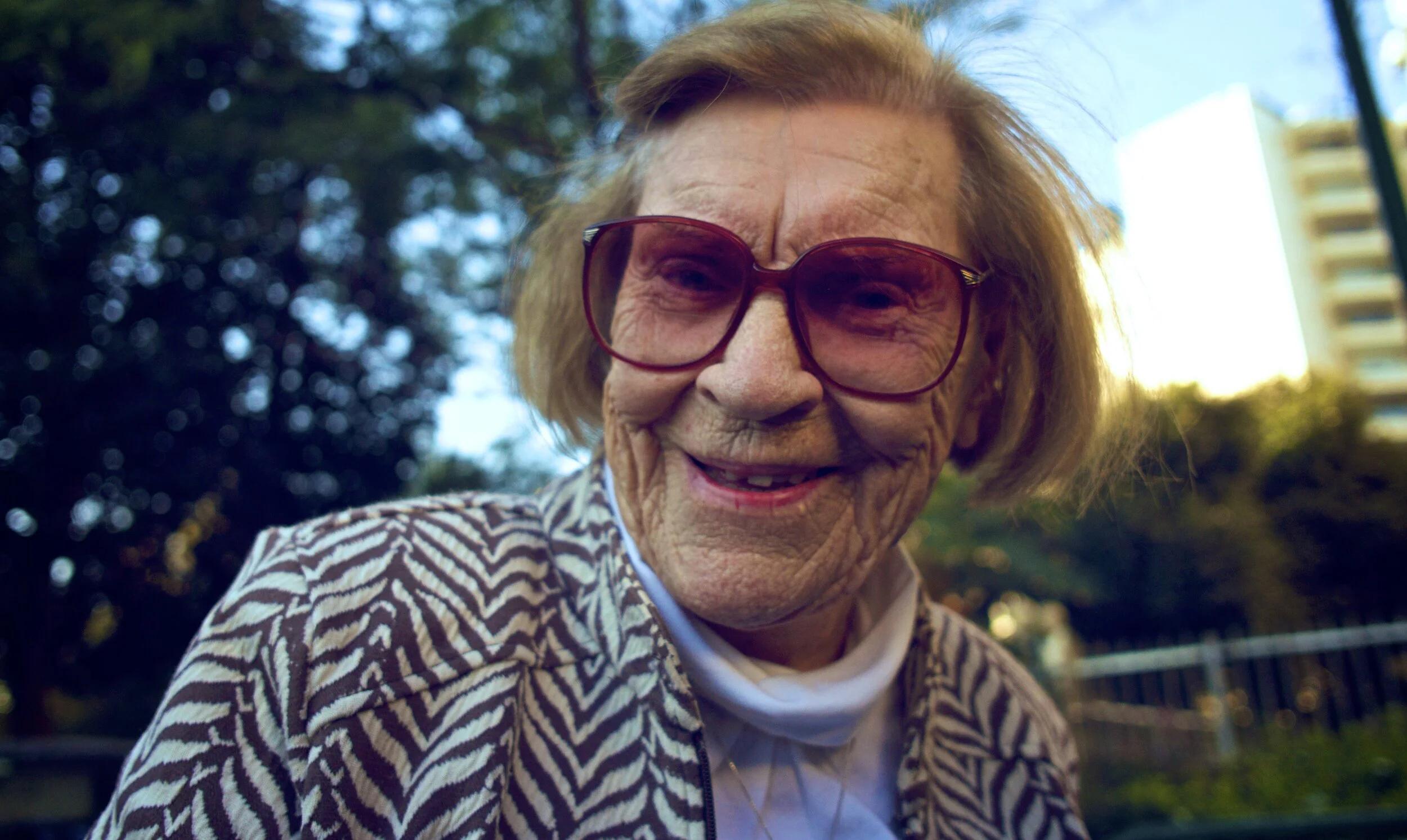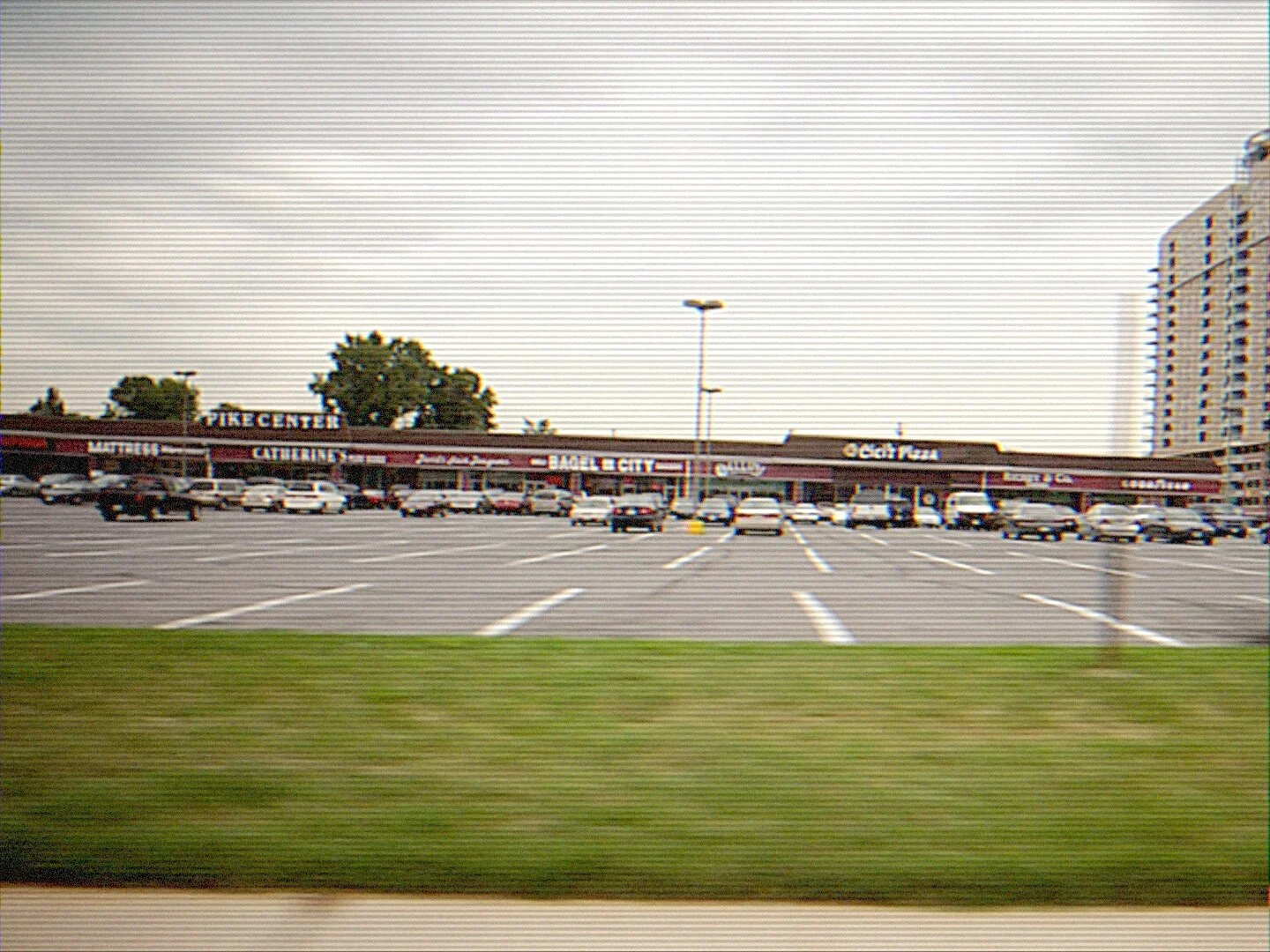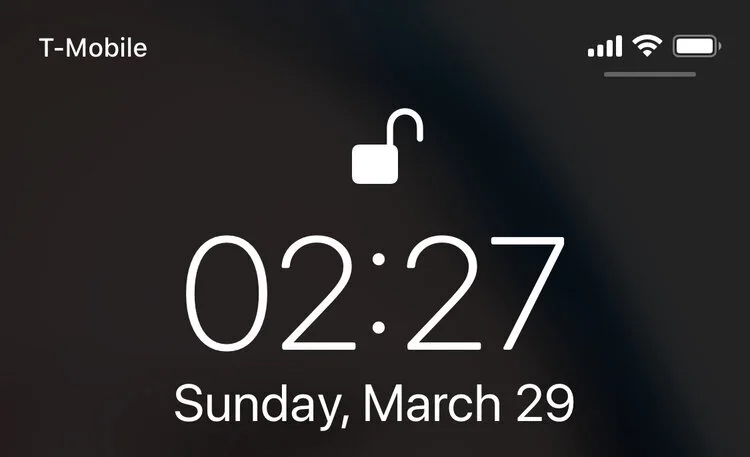“Draw what you see,” Helga Hoskava’s father told her 70 years ago before they were separated in the Jewish concentration camp, Theresienstadt. Now a renowned Czech painter, Helga passed on the passion born from her father’s words to her son and then her granddaughter—celebrated cellist Dominika Hoskava. Despite coming from a long line of secular artists and a non-Jewish mother, Dominika surprises her family by converting to Judaism and moving to Israel in an effort to reconnect with her heritage.
Benjamin Graham: Brighton Beach, Brooklyn, USA
The first meal I ever shared with Fayaz was over a year ago. I was an intern at the International Rescue Committee and Fayaz had just arrived in Washington DC via Afghanistan, carrying little more than a green card and a suitcase. As an intern, my primary responsibility was to help resettling refugees adapt to life in America, and on one particular afternoon, this meant driving with Fayaz to a social services office in northern Virginia.We spent the afternoon filling out food stamp applications and sitting through inconclusive interviews, all of which left us annoyed and hungry by the end of the day. On the drive back, I thought it would be a good idea to introduce Fayaz to the most American of cuisines, a value meal at McDonald's.Up to this point Fayaz had taken to America rather easily, navigating the DC metro system and applying for a credit card by himself, but he was completely stumped as he stood in front of the McDonald's menu. I advised him to stay away from the Big Mac for a while, and that the grilled chicken sandwich would be a safe choice for a beginner.Eying the sandwich suspiciously, Fayaz took his first bite; chewed slowly - paused - and then spat the food back into its bag. "You didn't tell me there was pork on this!" he snorted, pulling a translucent strip of bacon from his mouth with his thumb and index finger. I apologized and explained that I didn't eat at McDonald's often and I hadn't known that the grilled chicken sandwich came with bacon. I had also momentarily forgotten that Muslims don't eat pork.Fayaz wouldn't take another bite, but he did enjoy the fries. As he munched, he explained to me that there weren't any pigs in Afghanistan, except maybe in a zoo, and their certainly wasn't any bacon. I was fascinated that he could be happy in life without bacon, but he assured me it was possible. I continued to ask more questions about his country and his home life, all of which I knew surprisingly little about considering the ongoing war in Afghanistan.This would prove to be the experience that propelled our relationship past the realm of just work, because a few weeks later, after my internship ended, I got a call from Fayaz inviting me to an Afghan restaurant. I had introduced him to American food, now it was his turn to return the favor. We kept in contact over the next couple months, sometimes meeting up for Afghan food, but never going back to McDonald's.I didn't stay in DC for long, and after a stint working for a newspaper in Nepal, I began making plans to move to New York. I was already in the city, going down my list of acquaintances and moving from couch to couch as I hunted for apartments, when Fayaz called. It had been several months since we last talked, and coincidentally he was now living with a friend in Brooklyn.When I asked about his couch situation, he said that he didn't have one, but that I was welcome to stay with him and his friend for the entire month if I was okay with being a little cramped. I was okay with it.-Ben Graham
Interview with Holocaust Survivor Ela Stein Weissberger
Samosaman
We recently interviewed Fuad Ndibalema aka. Samosa Man in Burlington,VT.
Watch our video above and take a look at the Samosa Man website: http://www.samosaman.net/
Eugenie Mukeshimana spoke at screening of Valentina's Nightmare
You are warmly invited on Friday June 25, 2010 at 7:30 p.m. to The South Orange Vailsburg United Methodist Church, for a TRULY INSPIRATIONAL evening of Storytelling in honor of all the Rwanda Genocide Survivors in their own VOICE!
On the evening of June 25 a special community gathering was held at a Haitian church in New Jersey featuring a presentation and testimony from Rwandan genocide survivor, Eugenie Mukeshimana.
There is great importance for Eugenie and other survivors to share what they've experienced through storytelling, as this is the primary means of documenting history in the villages of Rwanda. Eugenie’s voice is a story of survival but she also speaks on behalf of nearly 1 million Tutsis who were killed by their Hutu neighbors during one of the darkest chapters in contemporary human history-the Rwandan Genocide of 1994.Eugenie’s presentation began with her introduction to the documentary Valentina’s Nightmare, filmed in 1997 by BCC journalist Fergal Keane. The film displayed devastating images of the aftermath of the genocide while tracing Valentina’s experiences and reflections after finally being discovered by UN troops, near death, with the fingers severed off her right hand by a machete.After screening the graphic film, Eugenie shared the trying chain of events leading to her own survival, each experience illustrating the fact that her presence today is nothing short of a miracle.In her quest to escape the genocide she did what ever was required to survive -- from being hidden under a neighbor’s bed while she was eight months pregnant, to cooking dinner for a soldier who has been ordered to kill her. Eugenie and thousands of others had to act like the cockroaches that they were cruelly referred to as by their killers - hiding constantly only to come out at night to quietly relocate.When Eugenie tells of the events that led to her survival she speaks plainly and simply, she is aware there is no reason to sensationalise her experience nor does she try to paint a picture of what happened to the millions of Tutsis who did not survive. The story she shares is of what she alone had to do to guarantee her and her unborn daughter’s survival, a story which continues with her present life in New Jersey.
09_feat01
Valentina
Student Reactions
We recently met with some students who were participating in Project DUMBO 2010, a course offered by Elmira College, where seven art students live in a loft in DUMBO for a month while touring the city, visiting artist studios and gaining a better understanding of the New York art world. The students were lead by their teacher Marc Dennis, whom we are currently working with on the film Mirrors which is part of The Ripple Project: One . Please read what some of the students wrote of their experience below.The below was posted on the Project DUMBO 2010 blog.
Last Friday we made a studio visit that was a little out of the ordinary. We met the people behind The Ripple Project. You can technically define this as a studio visit because we did see some of their behind the scenes work, but it was also a test screening for their project. We're one of the first groups to see their work in progress and it was an intense, emotional, thought-provoking experience.
The project goals are multi-faceted but one of their main objectives is to help explore how stories and experience change throughout the generations and what we can draw from all of these experiences. The video we were shown, "The Binding of Isaac" is the first video from the project and serves as a good introduction to the project. It really helps to relate the viewer to Isaac's story. That connection provides a much bigger emotional impact than the dry, sterile numbers and stats that most of us are taught in classrooms.
binding-of-isaac-collage
After seeing that video, the members of the Ripple Project showed us some of the footage they have shot for projects that are now being edited. This was interesting and fell more in line with what we are accustomed to on the trip. While still just as heavy emotionally as the short film, we were able to see a filmmakers approach to their piece. One member, Liron, kept emphasizing the difficulty of expressing an entire story into one piece, or one painting, an interesting concept and something to consider in the artistic process.
The stories of the people this team has traveled to film and try to portray through this project are absolutely incredible. The discussions that accompanied this raw footage and introduction to the project taught us all a lesson on perseverance and the strength of the human spirit.
-Tim Goodier
The following two testimonies were sent to us after a second discussion was held between the students and Dylan Angell of the Ripple Project.
I've always heard various individuals talk about "the power of art." I never really understood what these people were talking about. However, after having the opportunity to watch different parts of The Ripple Project, this phrase, "the power of love," suddenly became clear to me. Watching the footage of various Holocaust survivors who had become artists was extremely emotive in part due to the realization that these people lived through unimaginable horrors, but did not let the events of the holocaust define them. Rather they went on to create art and new lives. I do not know how each individual found solace in their art making, but I do believe it is due to the act of making art that these people were able to live fulfilling lives after the tragedies they witnessed and lived through. At least to me, The Ripple Project attests to the inherent power of art to heal, connect, teach, express, and communicate.- Katya Harris
Fred_terna-12
Upon meeting with the group from the Ripple Project to view their video I was rather moved by the project as I feel most people will be. I think what really makes it more meaningful is it gives the individual stories and their impact upon their life and their families. It simply makes it more personable and relatable as an individual in today’s time that has not gone through these experiences. It is not the typical documentary style and I think this really is what gives it more meaning. I was touched by the experience and felt I came away with a better understanding of the lasting impression the events have left on individuals and their families. You commonly hear about these things but it is hard to understand the reality of it. The video really puts it into a format that makes it personal. I felt that I had gotten to know the individuals in the clip and could relate them to people in my own life. Overall I think it is an excellent and moving project that will help people to understand the extent of the tragedies suffered by thousands of individuals.
-Kathy Henton
Bridges
A Rwandan genocide survivor documents her journey as she seeks out the wisdom and guidance from a fading generation of Holocaust survivors.
Today Eugenie Mukeshimana travels the Eastern United States to engage the voices of a dwindling population of Holocaust survivors — and to open her ears to the elusive knowledge and remarkable revelation of lives long lived beyond the unthinkable. Seventeen years ago in Rwanda, with her husband lost and five months pregnant, she spent a month hiding under the bed of an disinclined protector. Escaping death with luck and a belief in possibility,Eugenie landed in New Jersey with her infant daughter to find a Rwandan diaspora in shock and willful denial. Coming from a culture largely defined by its oral traditions, she was confounded by this profound inability to proactively engage the tragedies of a not so distant past. Unable to make sense of the senseless, plagued by her own changing memory, and burdened with the question of how to share her story with a maturing daughter, Eugenie turned to Holocaust survivors to begin a conversation of understanding, responsibility and life to be spoken across tables, oceans, cultures and generations.
Shared Memory Trailer
Painting helps a man express horrors beyond words.
“This was. This is.” Brooklyn-based artist and Shoah survivor, Fred Terna, declares gesturing towards two paintings—one ominous and dark, the other lighter, with hues of hope. “This is how the memory changed.” Shared Memory is part oral history, part private gallery tour where Terna invites the viewer into his home and discusses pieces from his carefully catalogued collection spanning the history of his artwork. Together, the paintings and Terna’s stories describe his path from the Czech Republic to Brooklyn, from surviving Theresienstadt to his taxing marriage with a fellow survivor. In Shared Memory, Terna reveals how painting is both a way of coping with the horrors he has experienced and a means to preserve his memories.
The following letter was written to Shared Memory Director and The Ripple Project Cofounder, Liron Unreich, by Fred Terna.
Dear Liron, I'm awed and delighted with the film. You and your team have done a superb job, telling the story of my paintings. Other film-makers have tried to make films about art and artists during the Shoah. When they focused on me they somehow stayed on the surface, there was a distance, a gap, between my feelings and ideas and what I saw on the screen. You are telling the story with great skill and insight, and I thank you.
During the Shoah we promised each other that the one who survives will tell about it. The burden is getting heavier as our numbers decrease, and you and your group are carrying this obligation with us, and for us.
Please give my thanks to all who are working with you on The Ripple Project. Looking forward to hearing from you before long,
Fred













